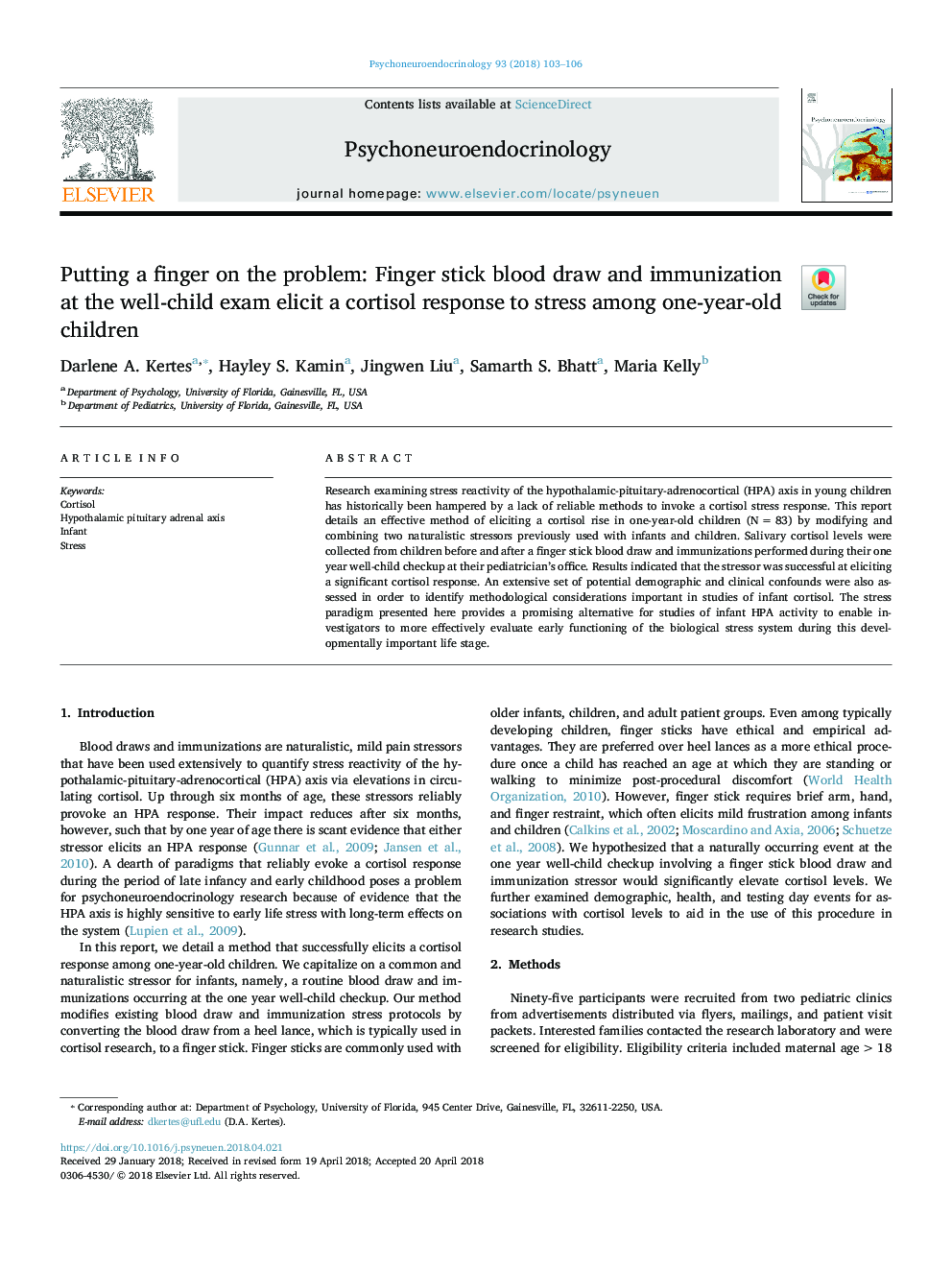| Article ID | Journal | Published Year | Pages | File Type |
|---|---|---|---|---|
| 6817603 | Psychoneuroendocrinology | 2018 | 4 Pages |
Abstract
Research examining stress reactivity of the hypothalamic-pituitary-adrenocortical (HPA) axis in young children has historically been hampered by a lack of reliable methods to invoke a cortisol stress response. This report details an effective method of eliciting a cortisol rise in one-year-old children (Nâ¯=â¯83) by modifying and combining two naturalistic stressors previously used with infants and children. Salivary cortisol levels were collected from children before and after a finger stick blood draw and immunizations performed during their one year well-child checkup at their pediatrician's office. Results indicated that the stressor was successful at eliciting a significant cortisol response. An extensive set of potential demographic and clinical confounds were also assessed in order to identify methodological considerations important in studies of infant cortisol. The stress paradigm presented here provides a promising alternative for studies of infant HPA activity to enable investigators to more effectively evaluate early functioning of the biological stress system during this developmentally important life stage.
Related Topics
Life Sciences
Biochemistry, Genetics and Molecular Biology
Endocrinology
Authors
Darlene A. Kertes, Hayley S. Kamin, Jingwen Liu, Samarth S. Bhatt, Maria Kelly,
